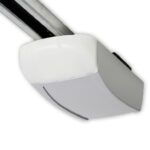Replacing a Manifold Absolute Pressure (MAP) sensor in your car is often a straightforward repair. Many car owners wonder if this sensor replacement requires a computer update or programming. Let’s clarify what’s typically involved when you replace a MAP sensor and how it relates to your car’s computer system.
Generally, in most modern vehicles, you do not need to manually program or update your car’s computer after replacing a MAP sensor. The Engine Control Unit (ECU), sometimes also referred to as the Powertrain Control Module (PCM), is designed to automatically recognize and adapt to a new MAP sensor.
Here’s why: Car computers are sophisticated systems that utilize adaptive learning. When you install a new MAP sensor, which measures air pressure in the intake manifold, the ECU will detect the new sensor’s signals. It then compares these signals to other engine operating parameters and quickly learns the specific characteristics of the new sensor. This learning process happens automatically as you drive your car.
Think of it like this: your car’s computer is smart enough to understand that sensors can vary slightly. It’s designed to calibrate itself to ensure optimal engine performance, regardless of minor differences between sensors.
However, there are a few important points to consider:
- Battery Disconnection: While MAP sensor replacement itself doesn’t necessitate programming, issues can arise if the car battery is disconnected during the process, or at any time close to it. Some car manufacturers, notably BMW, Audi, and Volkswagen, are known to have systems where disconnecting the battery can sometimes lead to computer issues requiring dealer intervention. While this is less related to the MAP sensor itself and more about the car’s overall electronic architecture, it’s a crucial consideration. In such cases, it’s not about programming the MAP sensor, but potentially resetting or unlocking other computer modules.
- Rare Exceptions: While uncommon for MAP sensors, some newer, more complex sensors in certain vehicle models might require a programming or calibration step. This is less typical for MAP sensors but could be the case for other types of sensors. Always refer to your vehicle’s repair manual or consult a professional mechanic if you are unsure.
- Troubleshooting vs. Programming: If you are experiencing issues after replacing a MAP sensor, such as engine performance problems or check engine lights, it’s more likely due to a different issue (like a faulty new sensor, wiring problems, or other underlying engine conditions) rather than a need for programming. In these cases, diagnostic procedures, possibly using an OBD-II scanner, are necessary to pinpoint the real problem.
In conclusion, for most vehicles, replacing a MAP sensor is a plug-and-play procedure. You shouldn’t expect to program the car computer afterward. The computer is designed to adapt. Focus on correct installation and consider potential battery-related issues, especially with European makes. If problems persist after replacement, seek professional diagnostic help rather than assuming computer programming is needed.
